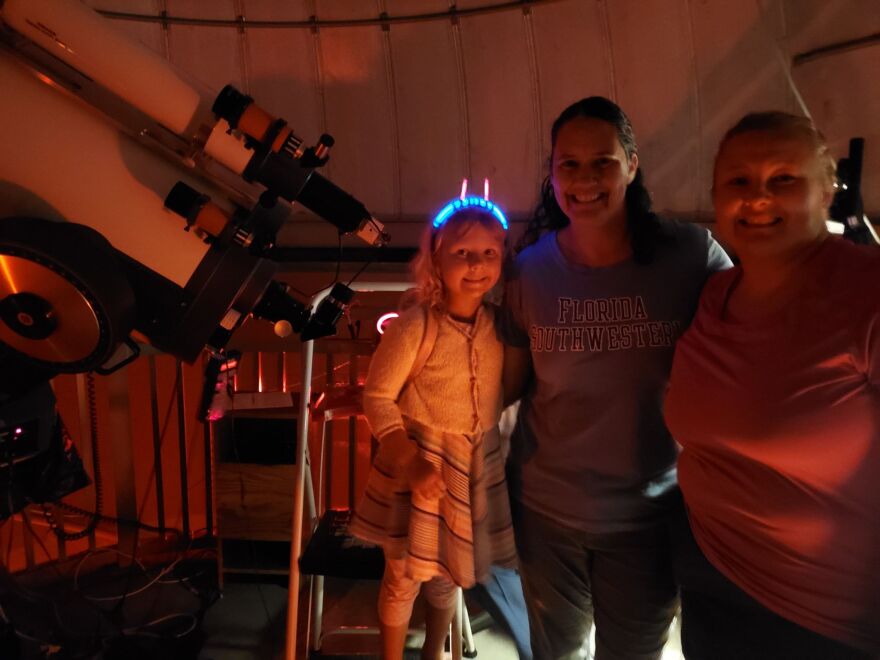A phenomenon that takes place every year and a half or so is bringing dozens to the James and Barbara Moore Observatory Florida SouthWestern (FSW) State College's Charlotte Campus on a late Sunday night to view the first total lunar eclipse of 2022.
Most stargazers are carrying either a DSLR camera with telephoto lens or a fully charged phone as they climb the spiral staircase of the observatory to get a closer look and snap a picture of the “super blood moon” through a massive white MEADE LX200 telescope.

Julia Kroker came with her 6-year-old daughter Jane to see the eclipse.
“We actually got a hotel room tonight so that we could drive down, be here, and then didn’t have to drive all the way home," said Kroker. "We just love learning about the moon and space and everything. She’s a homeschool kid, so we talked about how we can sleep in tomorrow since we’re doing school tonight. We’re just having a great time watching the phases of the lunar eclipse.”
Jane was excited to see the moon, but mostly for the crimson hue.

“The moon was almost covered with darkness, but I am excited for it to be red, because pink is my favorite color, and red is a darker shade of pink," said Jane.
Tom Segur is the director of FSW Collier’s observatory. As he adjusts telescopes outside the observatory for a few amature astronomers, he explains to me that the brilliant crimson coloring comes from the moon passing directly into Earth's shadow cast by the sun.

Segur says looking up at the stars and having viewing events like this is important because it provides perspective.
“It’s important though that we get things set up like this for the public to come and observe and just get a chance to see what's out there in the sky," said Segur. "Where we are in the universe and understand how we’re such a very small, insignificant part of the universe and there’s so much out there way beyond our own solar system, way beyond our own galaxy, the milky way, that we’re just a very small part of.”
In a rare occurrence, another lunar eclipse will be visible this year on November 8.

WGCU is your trusted source for news and information in Southwest Florida. We are a nonprofit public service, and your support is more critical than ever. Keep public media strong and donate now. Thank you.








